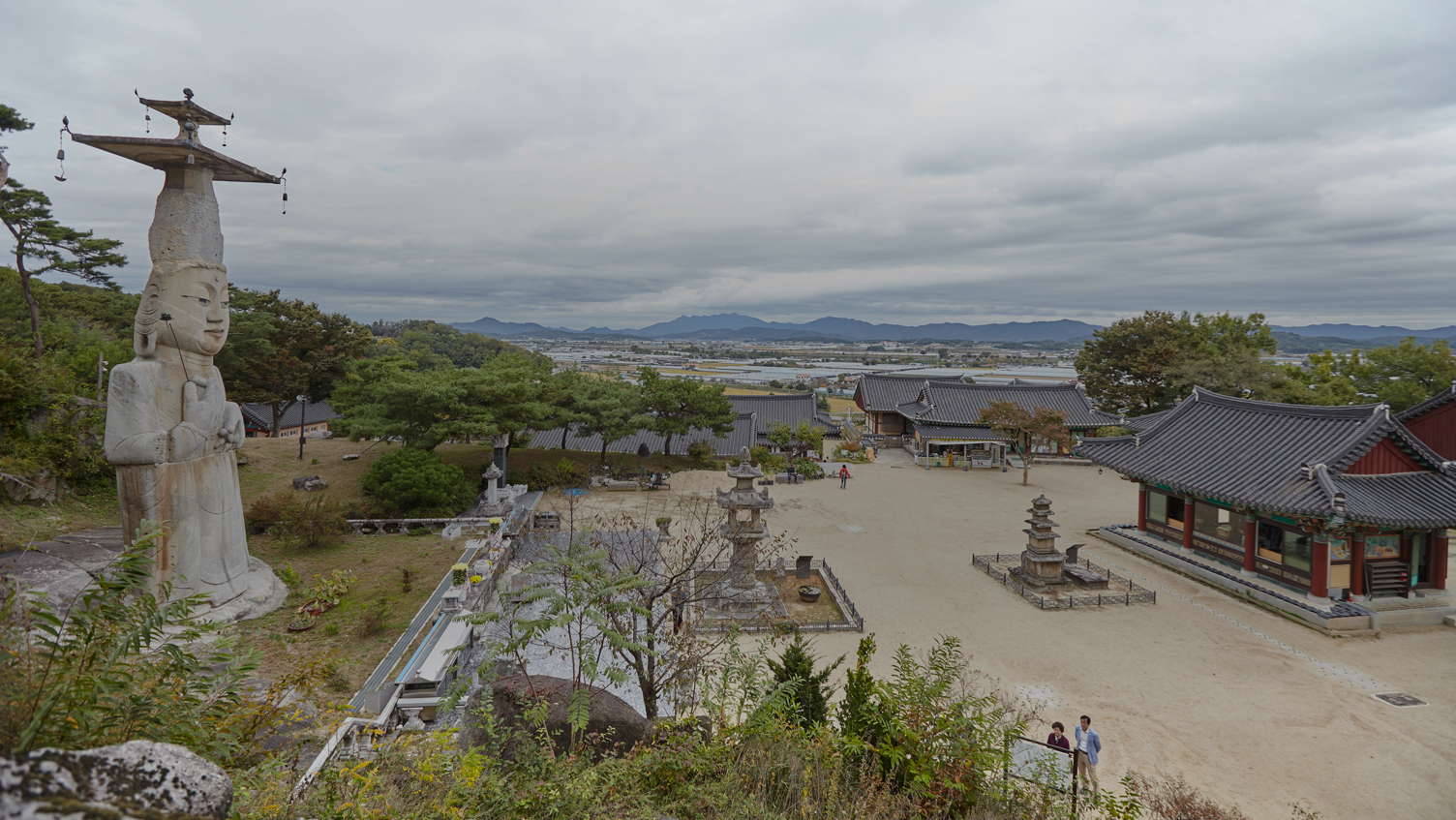
Korea’s largest stone Buddha statue, whose subtle and gentle smile sometimes evokes that of “Mona Lisa.”
The beautiful thousand-year-old temple introduces the Buddhist culture and history of the Goryeo Dynasty,
set against the background of the fruit-laden autumn scenery.
A millennial smile at Gwanchoksa Temple

After a short trip, visitors are welcomed by Gwanchoksa Temple, a thousand-year-old cultural heritage situated on the hill of Mt. Banyasan with extraordinary scenery.
Stone steps stretch from the temple site’s entrance to the main building.
Climbing up the stairs one by one relieves the anguish and anxiety of chaotic city life.
The temple houses highly unique and beautiful aspects of Buddhist culture, and the highlight is Eunjin-mireuk, a stone statue of Buddha (Korean Nat’l Treasure No. 218). Standing nearly 18 meters high, the statue overwhelms visitors with its magnificence, particularly with its serene and merciful smile of a thousand years, which is often compared to the smile of Mona Lisa.
The Buddha statue was completed after 36 years of joint effort of more than 100 stonemasons and Hyemyeong, the monk who had been ordered to do the work by King Gwangjong of Goryeo. Hyemyeong had to find the way to erect the large statue. One day, he saw two young monks make three pieces of a clay statue, pile up earth on the torso part, and place the head on it. Following this method, the monk completed the work by sliding the Buddha’s head up on the torso. The large ears of the statue, about 1.8 meters long, were designed to express King Gwangjon’s willingness to listen to the people’s voice. The legend says that, once Eunjin-mireuk was erected, rain began to wash off the statue and that the light from the middle of its forehead illuminated the surroundings.
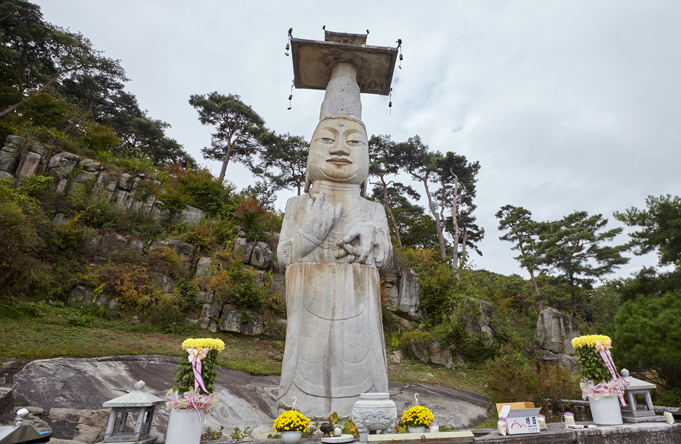
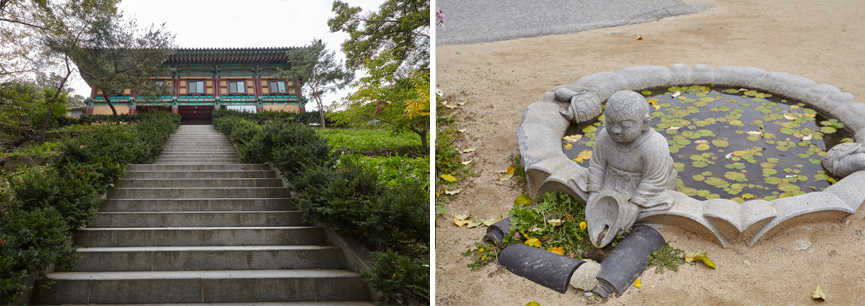
It is known that the temple was named by the Chinese monk Zhiyan, who followed the light and worshiped it as a “candle illuminating the whole world.” There is another famous legend. Whereas the statue’s torso miraculously illuminates itself and hot air is emitted when the country enjoys the reign of peace, the torso sweats and the lotus flower in the statue’s hand loses its color in times of national hardship.
Goryeo’s magnificent treasure
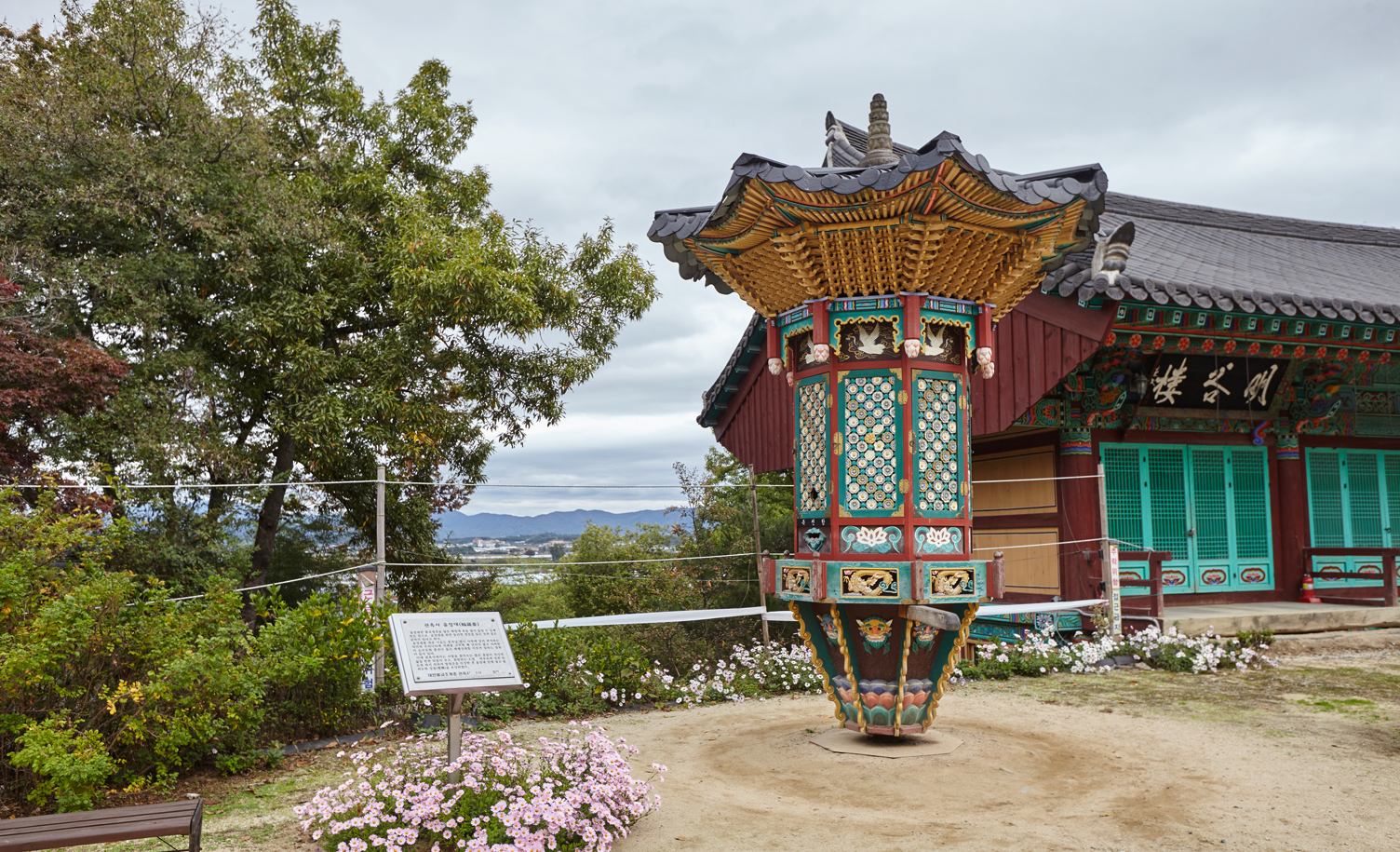
In addition to the Buddha statue, Gwanchoksa Temple also has a range of cultural assets. Situated in front of the main building, Yunjangdae is a case for Buddhist scriptures with a shaft to roll around, implying the hope to spread Buddha’s teachings and realize peaceful eras. As it is said that each spin of the case represents good deeds from one reading of the Buddhist scriptures, most visitors to the temple spin the case and make wishes. At the top of the stairs into the temple site is the tanding stone gate Haetalmun, or the “gate of vimutti.” This was built in the era of Joseon to require people who want to offer a prayer to the Buddha statue to line up before entering the temple.

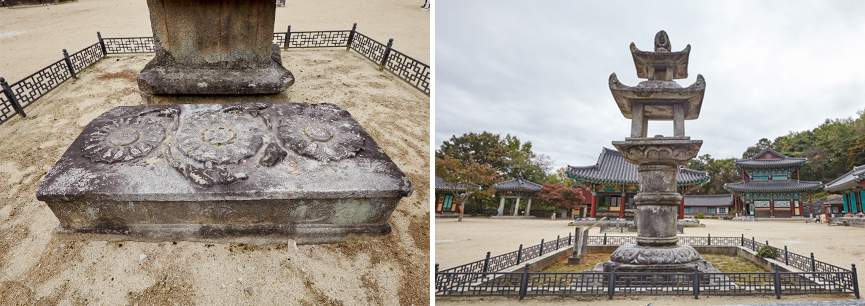
The statue faces stone lamps and a stone pagoda, as well as a stone platform, which is a high rectangular bondstone to worship Buddha. The top face is engraved with a beautiful lotus flower, and its right and left side each has two small lotus flowers as well. Among many extant stone platforms at Buddhist temples, this cultural property is particularly characterized by its beautifully engraved lotus flowers. The stone lamps standing in front of the statue signify Buddha’s truth illuminating the road for people. Weathering the long years, they still maintain their magnificence and grandiosity as a masterpiece of the Goryeo era.
A feast of autumn jujube
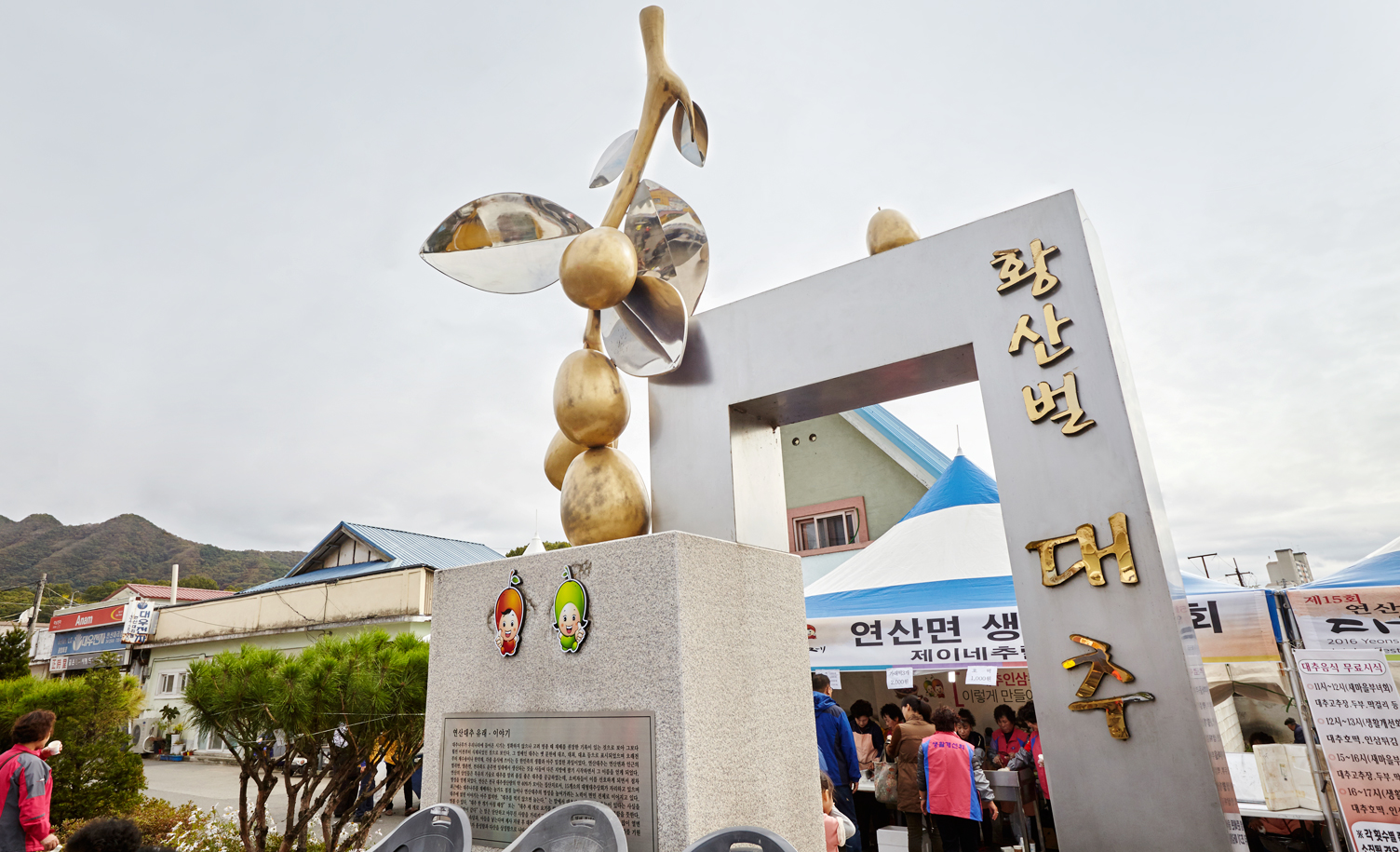
Autumn is the season of red jujubes, and the Yeonsan Jujube Festival is a good opportunity to visit a traditional marketplace and enjoy the most fecund time of the year. The boisterous scenes at the market and the air of festivity welcome visitors to Nonsan. As a signature autumn event of the area, the festival was launched in 2002 and marks its 15th anniversary in 2016.
The historic traditional Yeonsan market was opened in 1911 and has witnessed the long history along with the many local tradespeople. The festival offers everything imaginable to see, eat, and enjoy. With pies, red pepper paste, and rice cakes made with jujubes, visitors are treated to a variety of entertaining elements, such as some of the best local photo spots, craftwork made with jujube trees, and traditional performances. The visitors can enjoy the various offerings of the festival as they please, but they should not miss the main ingredient: dried jujubes in sacks, emitting an incredibly sweet smell. As the old saying goes, “Three jujubes a day keep the doctor away,” with the fruit offering both nutrients and satiety.
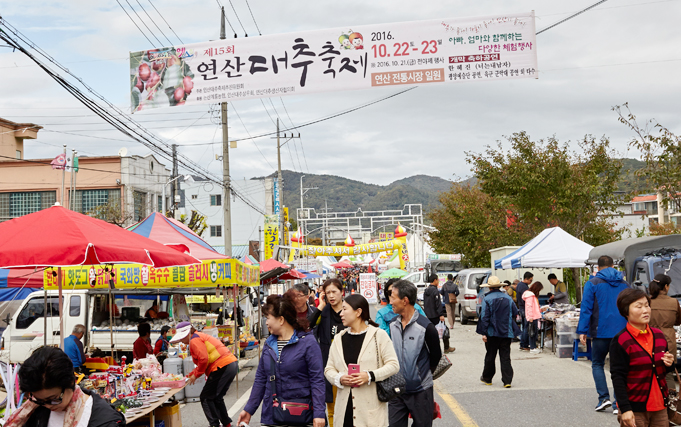

To make the best of the short window of the autumn season, visitors are invited to Goryeo’s splendid cultural heritage and the rich and heart-warming festivity in the local area of Nonsan.
